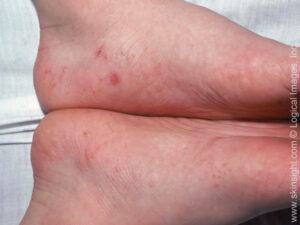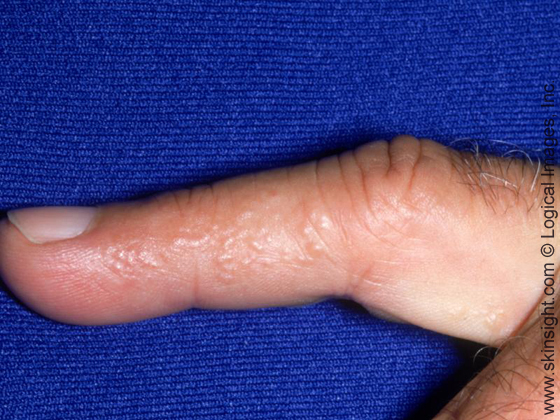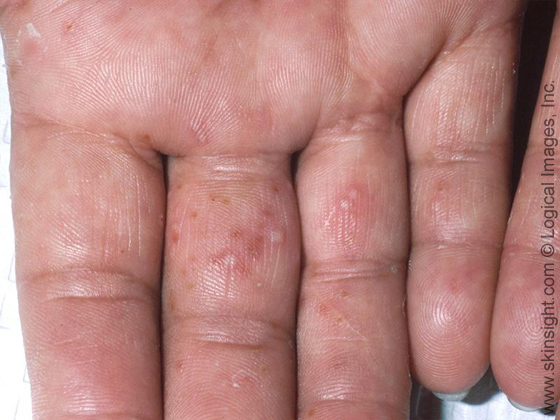
typical of dyshidrotic eczema
Dyshidrotic eczema, also called "pompholyx" is a common type of dermatitis (eczema) that causes small, itchy blisters to appear on the hands and, less commonly, feet. The blisters may grow into larger, painful blisters, pustules, and cracks.
The cause is unknown but may be related to abnormal sweating or allergies to certain substances, such as nickel. Contact with irritants such as detergents, solvents, or excessive moisture may often trigger or worsen symptoms.
Episodes of dyshidrotic eczema may last for weeks or months and then go away for long periods of time. To keep it under control, people should wear protective clothing when using detergents or solvents or soaking their hands in water for prolonged periods.
Dyshidrotic eczema often heals on its own, but treatments are available to relieve itching and other symptoms.
For mild cases, your doctor may recommend cool compresses of vinegar in water for 15 minutes, four times a day, to help dry up the blisters. Moisturizers may help keep the skin from drying out and itching even more. Thicker moisturizers with an ointment base, or silicone, may be especially helpful at protecting the hands.

clear fluid blisters at the sides of the fingers,
as displayed in the image.

dyshidrotic dermatitis are often difficult to see
due to the thick skin of the palm and fingers.
Cases of dyshidrotic eczema that do not respond to initial treatments may benefit from topical corticosteroids. These help reduce the inflammation and itching. Potent corticosteroids are not usually recommended for use for more than two weeks, but some cases may require longer treatment. Follow your doctor’s specific instructions.
Scratching the itch of bumps can leave a wound that can become infected. Skin infections are a complication of dyshidrotic eczema that may need treatment with antibiotics.
Source: Vivacare
Last updated : 5/13/2022